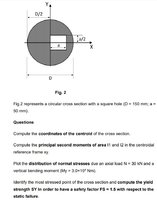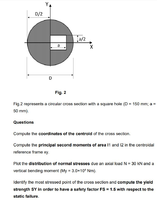Please see the image for the full question.
I know that you should divide the circle into different areas. For the left semicircle the centroid is at x=-4r/3pi, but I'm not sure how to tackle the right part to ultimately find the total centroid.
Feel free to also answer the questions after. Thank you very much in advance!

I know that you should divide the circle into different areas. For the left semicircle the centroid is at x=-4r/3pi, but I'm not sure how to tackle the right part to ultimately find the total centroid.
Feel free to also answer the questions after. Thank you very much in advance!

Last edited:

